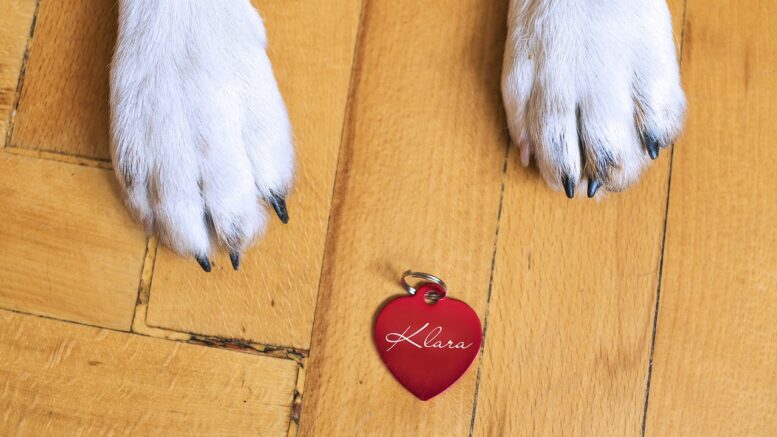di Sergio Mauri
Introduction: Pets hold a special place in our hearts, and their safety is a top priority for pet owners. Fortunately, advancements in technology have introduced innovative solutions to help ensure the well-being and security of our beloved companions. Pet localization and safety systems provide peace of mind by allowing pet owners to track their pets’ whereabouts, prevent them from getting lost, and respond swiftly in case of emergencies. In this article, we will explore the significance of pet localization and safety measures and how they contribute to the overall welfare of our furry friends.
- Microchips: A Lifeline of Identification: Microchipping has become a widely adopted practice in pet ownership. A tiny electronic chip, about the size of a grain of rice, is implanted under the pet’s skin. Each chip carries a unique identification number that can be scanned by veterinarians, shelters, or animal control agencies. Microchips serve as a permanent form of identification, providing a crucial link between lost pets and their owners. It is important for pet owners to register their microchips and keep their contact information up to date to ensure a swift reunion if their pet goes missing.
- GPS Tracking Devices: Real-Time Monitoring: GPS tracking devices have revolutionized pet localization and safety. These compact and lightweight devices can be attached to a pet’s collar or harness and provide real-time tracking of their location. Pet owners can monitor their pet’s whereabouts through smartphone apps or web interfaces. GPS tracking devices are particularly valuable for pets who enjoy outdoor adventures or have a tendency to wander. In the event that a pet goes missing, GPS trackers facilitate prompt retrieval and minimize the time spent searching.
- Virtual Fences: Boundaries for Safety: Virtual fences, also known as electronic containment systems, create safe boundaries for pets without the need for physical fences. These systems use GPS or radio frequency technology to establish a virtual perimeter, and when a pet approaches the boundary, they receive a warning signal, such as a vibration or sound. If the pet continues to cross the boundary, a mild static correction can be delivered through a specialized collar. Virtual fences are effective tools for keeping pets within a designated area, protecting them from potential dangers while allowing them the freedom to explore and play safely.
- Pet Safety Apps: Emergency Response: Pet safety apps have emerged as valuable tools for pet owners. These apps provide a range of features, including emergency contacts, medical records storage, and pet-specific first aid information. Some apps even offer community alerts for lost pets, allowing users to report and track sightings, aiding in the swift recovery of missing pets. These apps serve as comprehensive resources, enabling pet owners to access vital information and quickly respond to any unforeseen emergencies.
- Reflective and LED Gear: Enhanced Visibility: Enhancing a pet’s visibility during low-light conditions is crucial for their safety. Reflective collars, leashes, and vests, as well as LED attachments, help make pets more visible to drivers and pedestrians. These safety accessories can be particularly beneficial for evening walks or when pets are allowed outside after dark. By increasing visibility, pet owners reduce the risk of accidents and ensure that their pets are easily seen and recognized.
- Disaster Preparedness: In times of natural disasters or emergencies, pet safety becomes even more critical. Pet owners should have a disaster preparedness plan in place, including a designated safe space for pets, an emergency kit with essential supplies, and clear identification tags or collars. Additionally, microchips and GPS trackers play a crucial role in reuniting lost pets with their owners during chaotic situations.
Conclusion: Pet localization and safety measures provide invaluable peace of mind and safeguard our furry friends from potential harm or loss. Microchips, GPS tracking devices, virtual fences, pet safety apps, reflective gear, and disaster preparedness all contribute to creating a secure environment for pets. These technologies and practices empower pet owners to proactively protect their pets and quickly respond to any emergencies or incidents.
However, it’s important to remember that technology alone is not a substitute for responsible pet ownership. Here are some additional considerations to ensure the safety of your furry companions:
- Training and Recall: Training your pet to respond to commands and recall cues is essential for their safety. Even with the best technology, there may be situations where your pet needs to rely on their training to avoid potential dangers. Invest time in teaching basic obedience commands and practicing recall exercises in various environments.
- Secure and Enriched Environment: Create a secure and enriched living environment for your pets. Ensure that fences, gates, and doors are in good condition and provide adequate containment. Remove or secure any potential hazards within your home and yard that could cause harm to your pets. Additionally, provide mental and physical stimulation through toys, puzzles, and interactive play to prevent boredom-related behaviors that may compromise their safety.
- Supervision and Interaction: Regularly supervise your pets, especially when they are in unfamiliar surroundings or interacting with other animals or people. Vigilance is key to prevent accidents, conflicts, or encounters with potential hazards. Always be present and attentive during outdoor activities, walks, or visits to public spaces.
- Responsible Leash Walking: When walking your dog in public areas, always keep them on a leash unless in designated off-leash areas. This ensures their safety and compliance with local regulations. Be mindful of the surroundings, avoid crowded or potentially dangerous areas, and be aware of your dog’s behavior and reactions to minimize any risks.
- Regular Veterinary Care: Schedule regular check-ups with your veterinarian to ensure your pet’s overall health and well-being. Routine vaccinations, preventive treatments for parasites, and regular examinations help detect and address any potential health issues before they escalate.
- Pet ID Tags: In addition to microchipping, visibly display identification tags on your pets’ collars. These tags should include your contact information, making it easier for anyone who finds your lost pet to reach out and facilitate a reunion.
Pet localization and safety technologies have greatly enhanced our ability to protect and care for our pets. By combining these tools with responsible pet ownership practices, we can create a safe and nurturing environment where our furry companions can thrive. Remember, our pets rely on us for their well-being, and it is our responsibility to prioritize their safety at all times.


